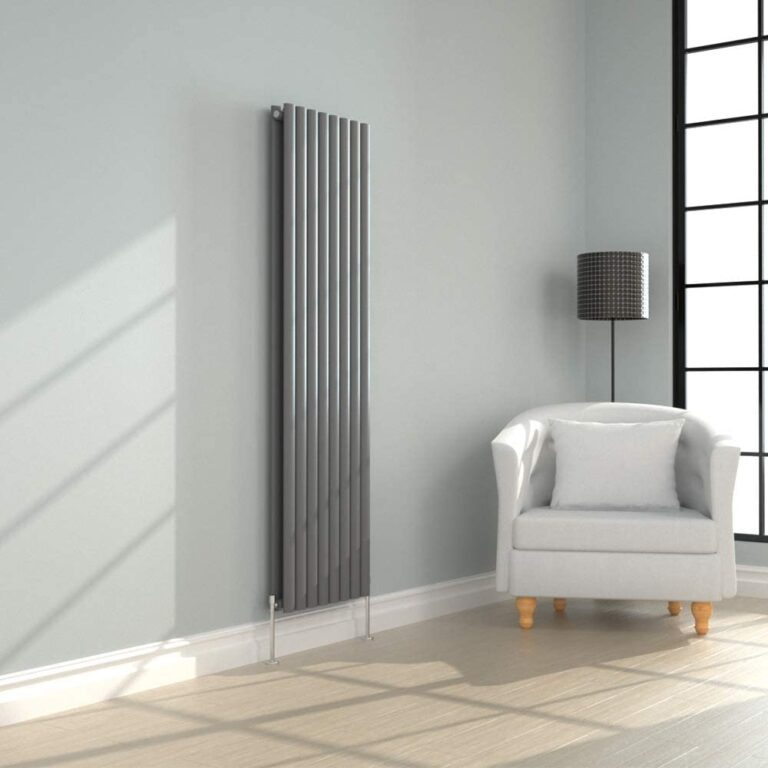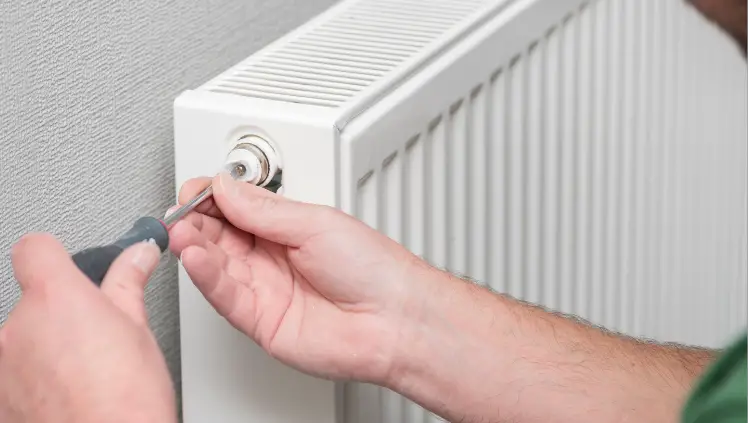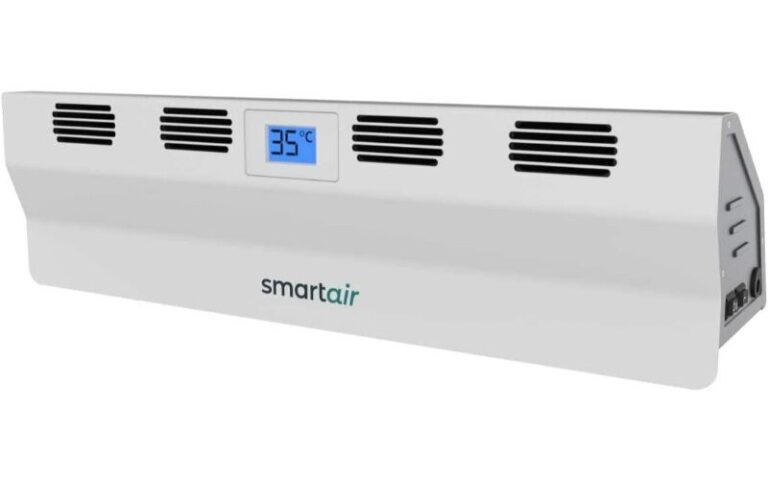What is radiator balancing?
Radiator balancing is a process of adjusting the speed of hot water flow throughout your central heating system to allow radiators to all heat up at the same speed. This ensures the heat from the boiler is distributed evenly across all of the radiators in your home.
How easy is it?
The process itself is relatively easy however it can take up to a day to do correctly as you’ll need to adjust every radiator in your home. If you’re comfortable with a little DIY then you should have no problems balancing the central heating system. However, if you’re struggling you can always call a plumber or heating engineer to complete the balancing process for you.
How long does it take?
It usually takes around 30 minutes per radiator and this will depend on how many radiators there are in your home. If you’ve got one or two radiators that need balancing then it shouldn’t be too much of an issue but if you’ve got 10+ radiators then it could get quite time consuming. We recommend clearing an afternoon or even a full day in your schedule to make sure you’re not rushing the process.
How to balance your radiators (Step-by-step guide):
- Bleed each radiator
- Turn off your heating
- Open all valves
- Turn on the central heating
- Write down the speed (and order) the radiators heat up
- Identify the fastest heating radiator
- Adjust the Lockshield valve on the fastest heating radiator
- Take heat measurements and adjust flow to match 12°C
- Repeat step 7 & 8 for all radiators
Tools you’ll need:
Step 1: Bleed your radiators
The first step is to make your way around each radiator whilst the central heating system is on and use a bleed key to remove any air from each radiator. For more info check out our guide on how to bleed a radiator.
Step 2: Turn off your central heating
Switch off the central heating by turning your thermostat right down. Allow 30-60minutes in order for the water and radiators to cool down.
Step 3: Open all radiator valves
Make your way around your house and open up all thermostatic radiator valves by turning them anti-clockwise (usually denoted with the number 5). You’ll also need to open up the Lockshield valves which are covered with a small plastic cap.
Step 4: Turn on the central heating
Now that the valves are all open, turning up the thermostat should kick-start your boiler into heating the water system and you’ll start to notice each radiator warming up slowly.
Step 5: Write down the speed (and order) the radiators heat up
Grab your pen and paper and take a note of the order in which the radiators heat up. You’ll need to keep switching between rooms up and down the stairs so make sure you’re ready to get your heart pumping!
Step 6: Identify the fastest heating radiator
Once you’ve identified the order and speed in which each of the radiators heats up we can begin to balance the system with small adjustments to the flow and return for each radiator. We need to start with the fastest radiator and work through the list until you’ve balanced each radiator one-by-one.
Step 7: Adjust the Lockshield valve on the fastest heating radiator
Turn the Lockshield valve clockwise until it is completely closed, then adjust it 1/4 turn anti-clockwise in order to allow a small amount of water to flow through the radiator.
Step 8: Take heat measurements and adjust flow to match 12°C
You’ll now need to use your digital heating thermometer to find out what the difference in temperature is between the copper piping before and after the radiator. The goal here is to ensure the temperature reading between the pipes is 12 Degrees Celsius so simply open or close the Lockshield valve with your Lockshield valve adjuster key to increase or decrease the value.
Remember that it takes a while for the value to change after making adjustments to the Lockshield so just be patient. Now all you need to do is sit back and enjoy the comforting, cosy warmth of your newly balanced radiator.
Step 9: Repeat step 7 & 8 for all radiators
Once you’ve balanced the fastest heating radiator, you’ll need to work your way around the house from fastest to slowest radiator and repeat steps 7 and 8 in order to have 12°C between the flow and return pipes for each radiator. This will ensure that your central heating system is fully balanced and all radiators should heat up simultaneously from now on.
When Should Your Balance Your Radiators
If you’re noticing any cold spots on your radiators throughout your home, then this could be a sign that your heating system is in need of some attention. You’ll also start to notice that some radiators are much quicker at reaching full temperature compared to other radiators in your home.
Why should you balance your radiators?
Put simply, your radiators and heating system will become more efficient as the separate rooms in your home will heat up in synchronisation with one another. This means that your home reaches the desired temperature faster and your boiler switches off sooner. Balancing your radiators is just one of a few ways you can improve radiator efficiency and performance.
How often should you balance your radiators?
You should balance your radiators every year but if you live in an area where there’s lots of snowfall during winter months, you may want to consider balancing them twice per season. If you don’t know how long it has been since you last balanced your radiators then it can’t hurt to make some adjustments, particularly if you have a cold radiator which could mean you have an unbalanced radiator system.
What’s the difference between Balancing and bleeding a radiator?
Balancing and bleeding of radiators are fairly similar in the fact that they are both used to increase the efficiency of your heating system but they are inherently different in the methods used. Luckily, you don’t need to remove the radiator in either scenario.
Balancing is about making sure the radiators emit a steady and consistent heat across the entire home. Whereas, bleeding is used to identify and fix the problem of a single radiator that is heating up slowly due to trapped air in the system. By bleeding, you let the air out hence preventing cold spots on your radiator.
All in all, balancing your radiators ensures that your whole home heats up quickly and efficiently and bleeding ensures that there are no cold spots on your radiator so both are necessary steps in achieving an efficient home heating system.






